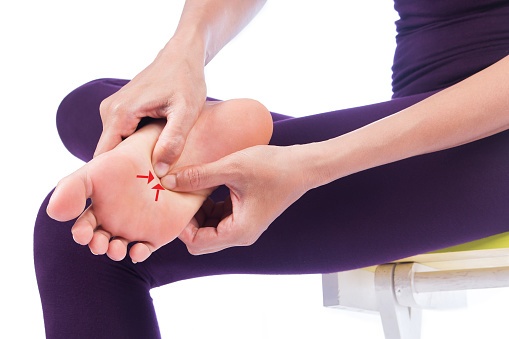Arch pain and over-pronation can cause problems for people of all ages and can even distress an athlete’s performance during every type of activity. For those who suffer from this type of pain, there are 3 likely causes that many people may not even know about. Most of the causes are easily averted, whereas several can be hereditary. According to the Cleveland Clinic, 3 of the easily averted causes for arch pain include pointed-toe heels, shoes that are too snug, and deficient arch support . These bad choices can all cause painful foot disorders like bunions, hammertoes, and plantar fasciitis. The Mayo Clinic has found that 2 of the inherited foot problems that can cause over-pronation and foot arch pain include low foot arches or arches that are excessively high. Here are some common foot procedures that remedy these disorders and how each of them can be resolved.
Serious Foot Issues Can Occur Without Proper arch support
Some of the hereditary foot disorders include either fallen arches or excessively high arches. Both types of arch disorders can affect the average person as well as an active athlete. The result of a fallen arch can be foot arch pain and over-pronation because this weakened part of the foot is not performing as it should. When this part of the foot malfunctions, foot over-pronation occurs which can cause a heel spur, a bony protrusion in the heel. Surgery is sometimes needed to remove the boneprotrusion and relieve the pain. The surgeon will use a bone saw to cut away the extra spur of bone to take away the inflammation and pain it had been causing. The best alternative for treating both types of arch disorders so heel spurs can be prevented is by supplying the foot with normal arch support through arch lifting shoes.
When Bunion Removal Procedures are Necessary
Removal of a bunion, or a bunionectomy, is the process through which the bone growth that appears to the side of the ball of the foot is filed away to achieve a more norma foot profile and width. In the most serious cases where the big toe has situated itself under the other toes, the foot doctor cuts a triangle-shaped portion out of the bone in the big toe to reset it to its original state. A single metal osteo screw is turned inside the bone to hold the new position in place. After about half a year, the screw can be taken out. Though this condition can be caused by pointed shoes, some bunion cases are inherited. Surgeons confer that shoes with little space force the toes into an unnatural position can cause bunions.
Without Proper Shoes, Painful Hammertoes Can Occur
Shoes that crowd the foot, including pointed-toe shoes, can result in development of hammertoes. This condition can affect athletes that wear snug shoes during training as well. Hammertoes are, regrettably, difficult to address without a corrective operation. First, a foot doctor can try to splint the affected toe to try and coax it into a more natural placement. For this procedure to work, patients need to wear shoes with plenty of toe room. Hammertoes can recur if ill-fitting shoes are worn again. If splinting the toe is unsuccessful, surgery is the lone alternative. The afflicted toe must have a portion of the bone removed to reduce its twist. The recovery period is vital, as patients who refuse to stay off their feet as recommended will not heal correctly. The prevention for this condition is to wear well-fitted shoes.
Regardless of lifestyle, genetic disposition, or age, foot disorders can affect a fair number of persons. Though foot procedures can surgically repair these conditions, most of the time they are preventable through proper shoes and appropriate arch support .

